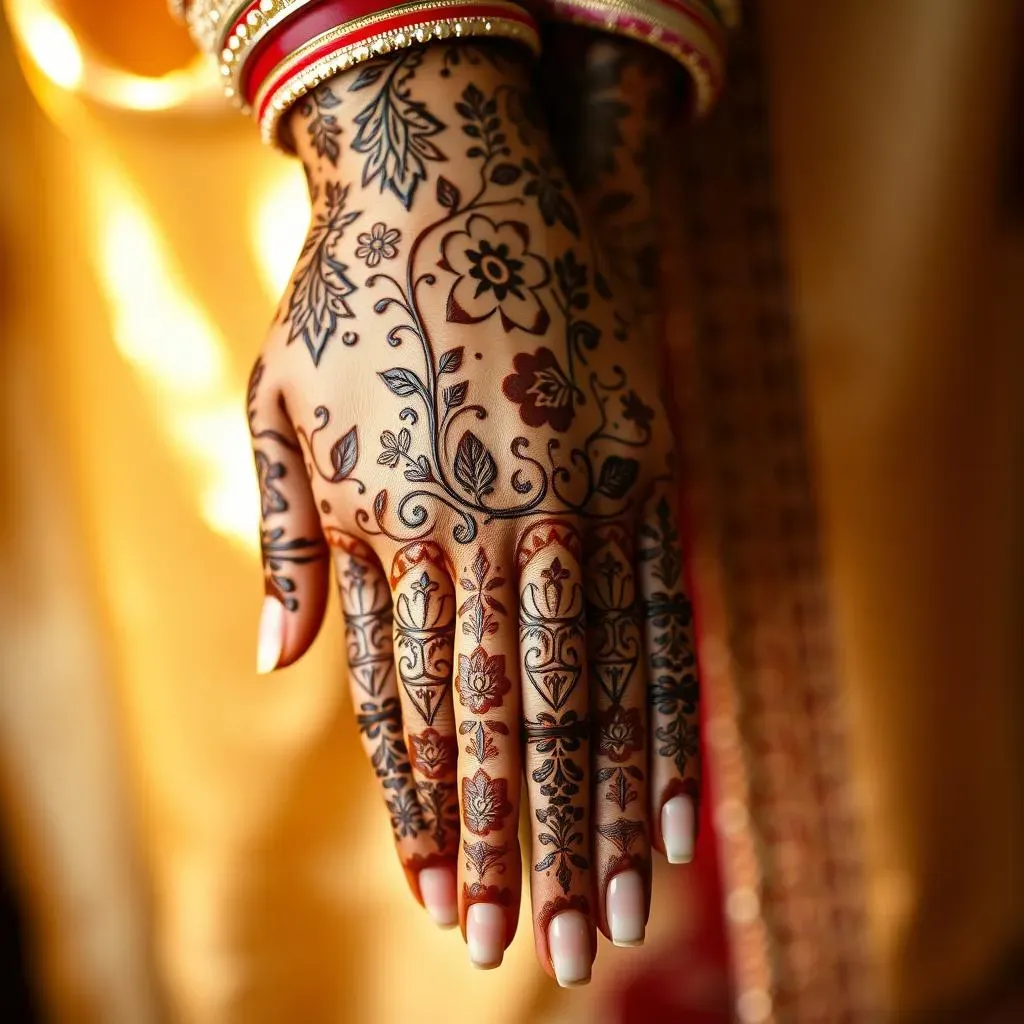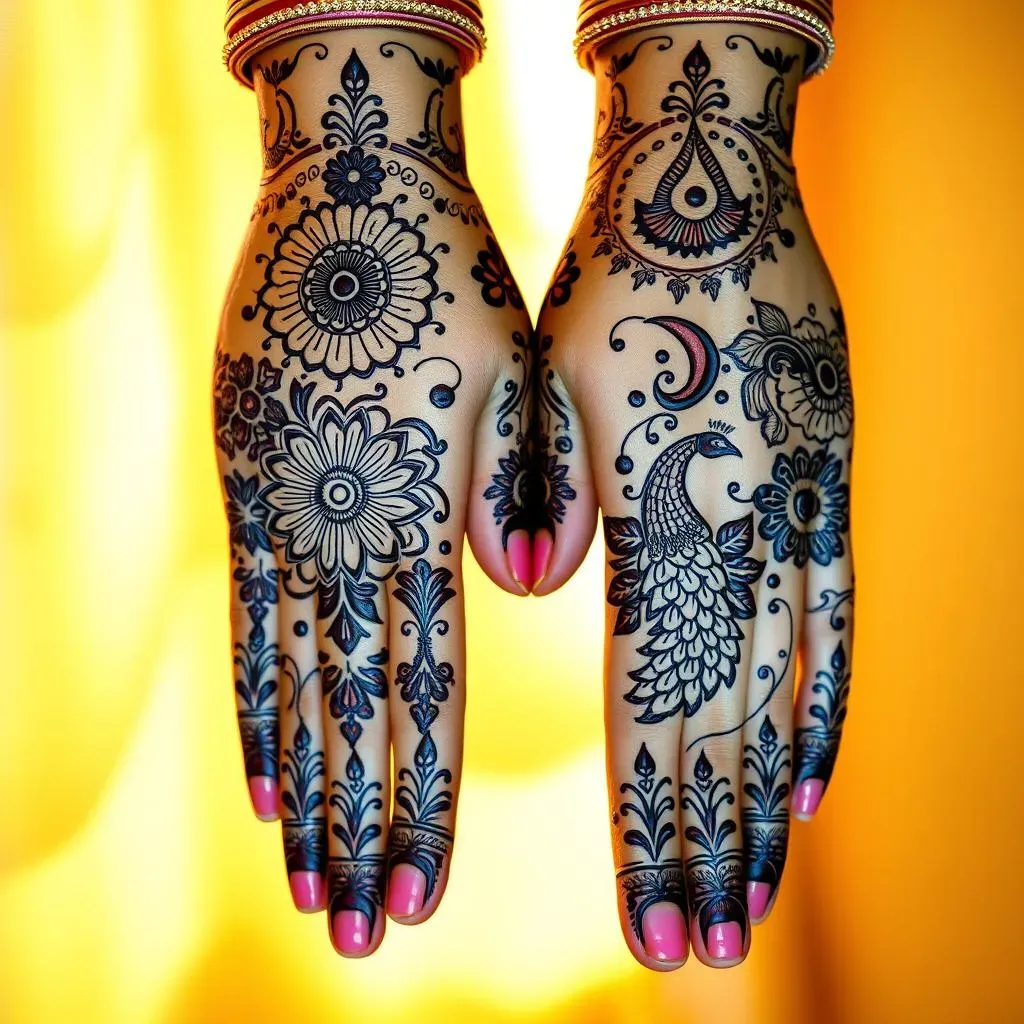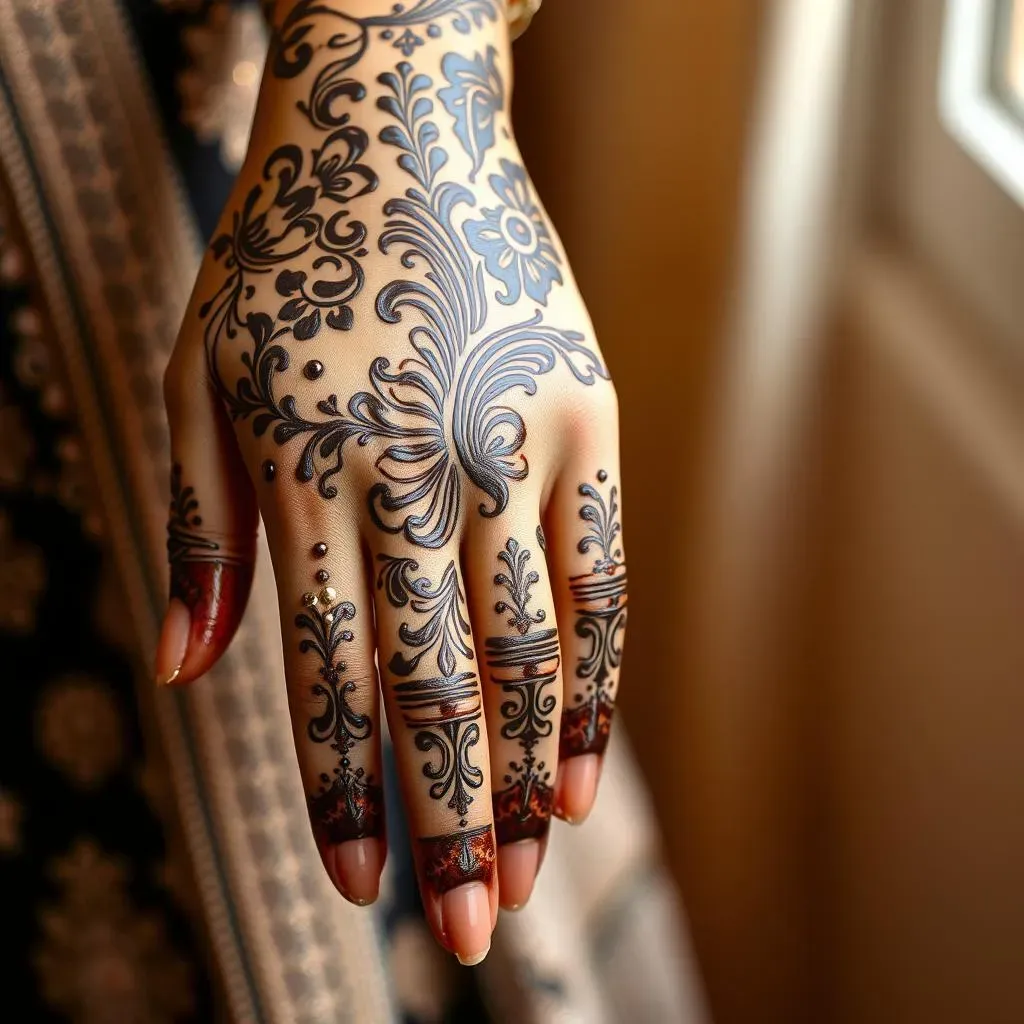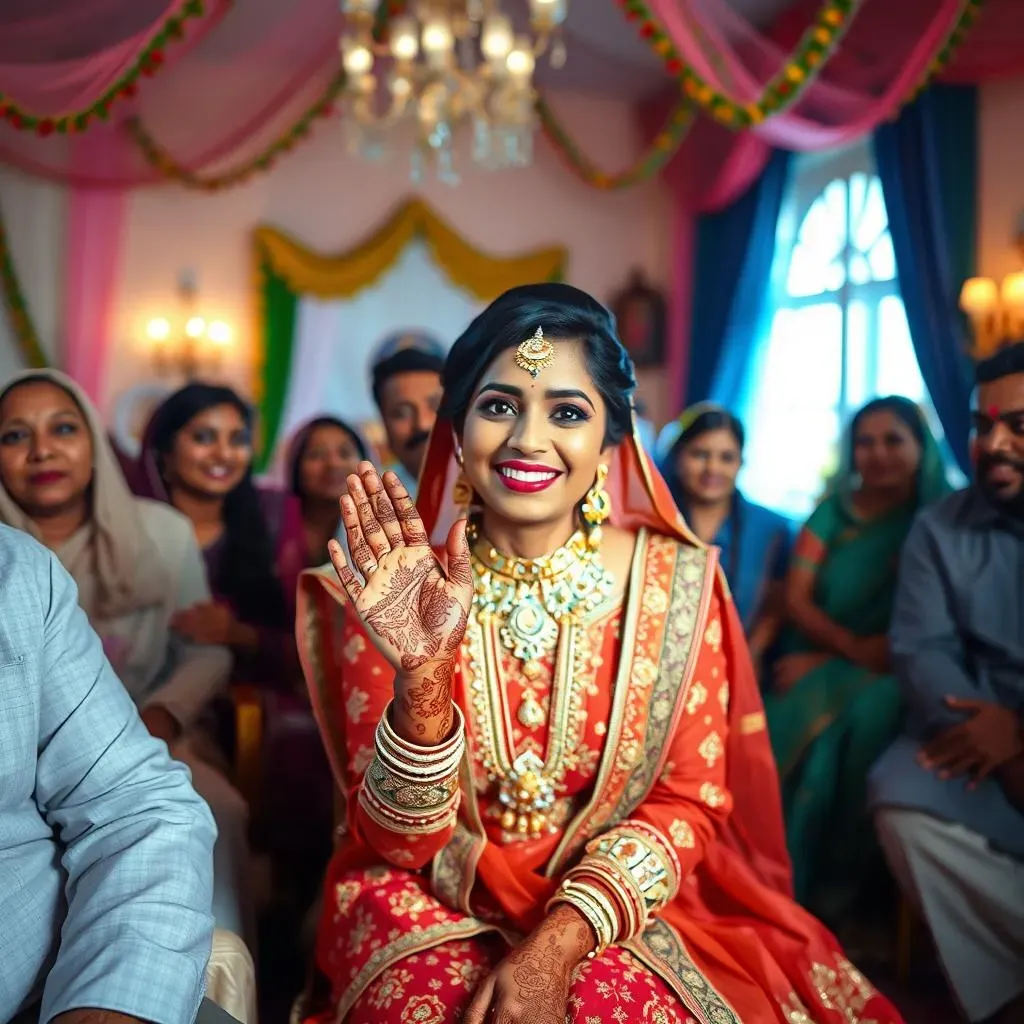Table of Contents
Welcome to a captivating journey into the world of Pakistani bridal henna designs! For centuries, these intricate adornments have been more than just body art; they're a vibrant expression of culture, tradition, and the joyous anticipation of a wedding. This article will immerse you in the rich history and symbolism behind these stunning designs, taking you from the ancient origins of the practice to the breathtaking modern interpretations that continue to captivate brides today. We'll explore the diverse motifs and patterns that define Pakistani bridal henna, revealing the stories woven into each swirling line and delicate flourish. You'll discover the artistry behind the creation of these temporary masterpieces, from the traditional techniques to the innovative twists contemporary artists are incorporating. Finally, we'll guide you through the process of finding the perfect henna artist to bring your dream Pakistani bridal henna designs to life. Prepare to be inspired by the beauty and artistry of this ancient tradition, and discover how you can incorporate these timeless designs into your own special day. So, let's begin our exploration of the enchanting world of Pakistani bridal henna designs!
The History and Significance of Pakistani Bridal Henna Designs
The History and Significance of Pakistani Bridal Henna Designs
Ancient Roots and Cultural Significance
Henna's journey in South Asia stretches back millennia, far beyond the confines of modern Pakistan. Evidence suggests its use in decorative and ceremonial practices dates back to ancient civilizations, with henna's rich, reddish-brown hue symbolizing prosperity, fertility, and good fortune. In the context of Pakistani weddings, the application of henna, or *mehndi*, transcends mere aesthetics. It's a deeply ingrained ritual, a celebration of the union, and a potent symbol of the bride's transition into married life. The intricate designs aren't just pretty; they tell stories, carry blessings, and connect the bride to her heritage.
Symbol | Meaning |
|---|---|
Flowers | Fertility, beauty, and new beginnings |
Leaves | Growth, prosperity, and abundance |
Geometric Patterns | Strength, stability, and protection |
The Mehndi Ceremony: A Celebration of Community
The *mehndi* ceremony itself is a vibrant spectacle, a joyous pre-wedding event brimming with family, friends, and festive cheer. It's not just about adorning the bride; it's a communal celebration, a time for bonding, sharing stories, and creating lasting memories. The application of henna is often a collaborative effort, with family members and friends participating, adding their own personal touches to the bride's intricate design. This shared experience strengthens familial ties and creates a sense of unity and togetherness as the bride embarks on this new chapter of her life. The rich, earthy aroma of the henna paste fills the air, adding to the sensory experience of this significant cultural tradition.
- Preparation of the henna paste
- The application of the henna design
- Celebration and festivities
Modern Interpretations and Enduring Tradition
While the core significance of *mehndi* remains deeply rooted in tradition, its artistic expression has evolved over time. Modern Pakistani bridal henna designs incorporate contemporary elements alongside classic motifs, reflecting a dynamic blend of heritage and innovation. Artists are experimenting with new styles, colors, and techniques, while still honoring the rich history and symbolism of this ancient art form. This fusion of old and new ensures that *mehndi* continues to hold its place as a cherished element of Pakistani weddings, adapting to the changing times while upholding its cultural significance.
Exploring Traditional Pakistani Bridal Henna Motifs and Patterns
Exploring Traditional Pakistani Bridal Henna Motifs and Patterns
Floral Fantasies: Delicate Blooms and Lush Vines
Pakistani bridal henna designs frequently feature an abundance of floral motifs. These aren't just simple flower shapes; they're intricate representations of specific blooms, often symbolic of fertility, beauty, and new beginnings. Think delicate jasmine blossoms, the regal rose, or the vibrant marigold – each carefully rendered with meticulous detail. These floral patterns often intertwine with lush vines and leaves, creating a flowing, organic design that covers the hands and feet. The arrangement of these floral elements often reflects traditional patterns and the artist's creative interpretation. The overall effect is one of breathtaking elegance and natural beauty.
Flower | Symbolism |
|---|---|
Jasmine | Purity, love, and sensuality |
Rose | Passion, beauty, and devotion |
Marigold | Celebration, prosperity, and good fortune |
Geometric Grandeur: Intricate Patterns and Symbolic Shapes
Beyond the floral flourishes, geometric patterns play a crucial role in traditional Pakistani bridal henna. These aren't just random shapes; they often represent strength, stability, and protection for the bride as she embarks on her new life. Intricate mandalas, tessellations, and other geometric designs are skillfully incorporated into the overall composition, creating a balance between the organic and the structured. These patterns often serve as a backdrop for the floral motifs, enhancing their visual impact and creating a harmonious blend of styles. The precision and complexity of these geometric patterns showcase the artist's skill and the cultural significance of the design.
- Mandala: Represents the universe and cosmic balance
- Tessellations: Symbolize unity and interconnectedness
- Geometric Borders: Provide structure and enhance the overall design
Animals and Symbols: Hidden Meanings and Cultural References
While flowers and geometric patterns dominate, traditional Pakistani bridal henna often incorporates other symbolic elements, such as animals and religious motifs. Peacocks, for instance, often feature prominently, symbolizing beauty, grace, and royalty. Other animals, such as elephants (representing wisdom and strength) or fish (symbolizing fertility and abundance), may also appear, adding layers of meaning to the design. Religious symbols, such as the crescent moon or star, may also be incorporated, reflecting the bride's faith and beliefs. These subtle additions enhance the cultural richness and personal significance of the henna design.
Modern Twists on Classic Pakistani Bridal Henna Designs
Modern Twists on Classic Pakistani Bridal Henna Designs
Blending Tradition with Contemporary Styles
While traditional motifs remain cherished, modern Pakistani bridal henna designs showcase a beautiful fusion of classic elements and contemporary aesthetics. Think intricate paisley patterns interwoven with bold geometric shapes, or delicate floral designs accented with modern calligraphy. Artists are experimenting with color palettes, incorporating metallic accents or subtle shades to enhance the overall design. This creative blend respects the heritage of the art while adding a unique, personalized touch that reflects the bride's individual style. The result is a design that's both timeless and contemporary, a perfect reflection of the bride's personality and the evolving nature of Pakistani culture.
- Incorporating modern calligraphy
- Using metallic henna for accents
- Adding geometric patterns to traditional floral designs
- Experimenting with color palettes beyond traditional brown
Minimalist Mehndi: Less is More
In contrast to the elaborate, full-hand designs of the past, minimalist mehndi is gaining popularity. This style focuses on clean lines, simple shapes, and strategically placed accents. It's not about sacrificing detail; it's about maximizing impact with a more refined aesthetic. Think delicate floral sprigs, carefully placed geometric patterns, or a single, striking motif as a focal point. This understated elegance allows the bride's natural beauty to shine through, offering a modern alternative to the traditional, heavily embellished designs. Minimalist mehndi is perfect for brides who want a sophisticated, less-is-more approach while still honoring the tradition.
Style | Characteristics |
|---|---|
Minimalist | Clean lines, simple shapes, strategic placement |
Traditional | Intricate details, full coverage, abundant motifs |
Fusion | Blending traditional and modern elements |
Finding the Perfect Pakistani Bridal Henna Artist for Your Big Day
Finding the Perfect Pakistani Bridal Henna Artist for Your Big Day
The Search Begins: Finding Your Perfect Artist
Choosing the right henna artist for your wedding is crucial; it's about finding someone who not only possesses exceptional skill but also understands your vision and cultural preferences. Start your search early, giving yourself ample time to explore options and schedule appointments. Look beyond just online portfolios; seek recommendations from friends, family, or wedding planners. Attend bridal fairs or browse online platforms specializing in wedding services to discover talented artists in your area. Remember, this isn't just about the design; it's about the experience – finding an artist who makes you feel comfortable and confident is paramount.
- Seek recommendations from trusted sources.
- Browse online portfolios and reviews.
- Attend bridal fairs and wedding expos.
- Check artist availability well in advance.
Consultation and Collaboration: Bringing Your Vision to Life
Once you've identified a few potential artists, schedule consultations to discuss your preferences and expectations. Bring inspiration images, discuss your desired style (traditional, modern, minimalist), and communicate any specific elements or symbols you'd like incorporated. A skilled artist will actively listen to your ideas, offer creative suggestions, and collaborate with you to create a unique design that reflects your personality and wedding theme. Don't hesitate to ask questions about their experience, techniques, and the quality of their henna paste. A thorough consultation ensures a successful outcome and a memorable experience.
Factor | Importance |
|---|---|
Experience | Look for artists with proven track records. |
Style | Ensure their style aligns with your vision. |
Communication | Choose an artist you feel comfortable communicating with. |
Hygiene | Confirm they maintain high standards of hygiene. |